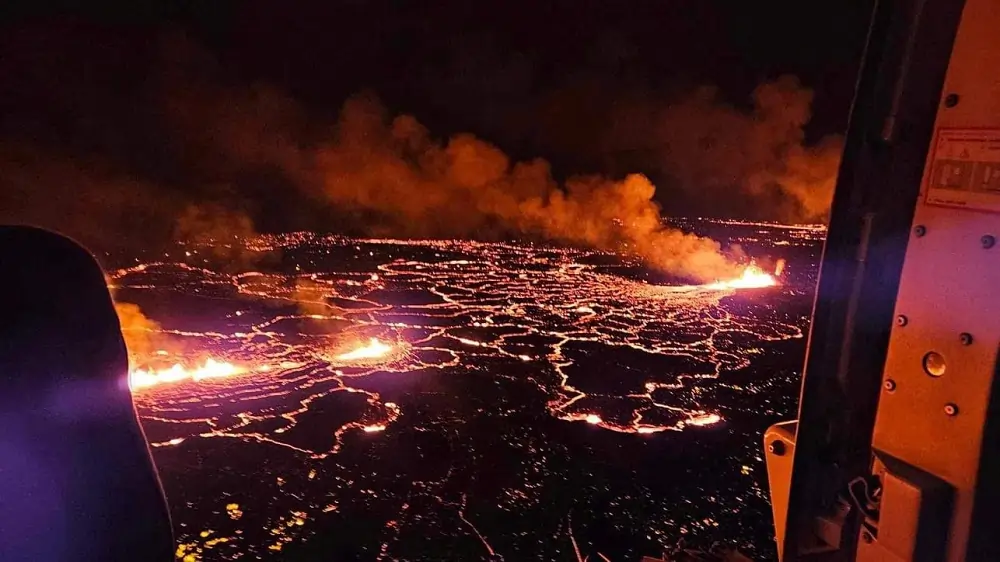
Factbox-Will Iceland volcano affect flights, what damage could be caused?
STOCKHOLM (Reuters) – A volcano erupted late on Monday on Iceland’s Reykjanes peninsula, spewing lava and smoke across a wide area after weeks of intense earthquake activity.
Below is some detail about what impact the earthquake could have, and on previous eruptions in Iceland:
ICELAND VOLCANO LOCATION
– Geologists said early on Tuesday that lava appeared to be flowing away from the coastal Grindavik, which is the only town in the area and located 40 km (25 miles) southwest of capital Reykjavik
– Grindavik’s 4,000 inhabitants were evacuated in November as a precaution after days of seismic activity, and roads in the area are closed.
– The volcano is located about 30 km from Reykjavik. Keflavik international airport is somewhat nearer and closer still is the Blue Lagoon, a renowned geothermal spa popular with tourists visiting Iceland. The Blue Lagoon has been mostly closed since the current seismic activity was detected.
– There are five to six different volcanic systems on the Reykjanes peninsula, said Halldor Geirson, an associate professor at the Institute of Earth Sciences, University of Iceland
– Monday’s eruption is part of the Svartsengi volcanic system, which is different from the nearby Fagradalsfjall that erupted in 2021 and 2022
WILL ICELAND WEATHER AFFECT POLLUTION RISK?
– The eruption is taking place on a fissure that was last active about 2,000 years ago
– Lava flows had decreased from 200-250 cubic meters per second in the first two hours of the eruption to around a quarter of that on Tuesday morning
– It is normal for fissure eruptions to subside after an initial burst, but it could still go on “for some time”, Geirson said
– The crack that opened up in the earth’s surface was about 4 km long, with its southern end some 3 km from Grindavik, Iceland’s Meteorological Office said
– If the eruption maintains the current intensity, it will produce significant air pollution, volcanology researchers at the University of Iceland said on Facebook
– “The good news is that the wind is northwesterly and according to the forecast it will stay northerly for the next few days. Hence the eruption plume is likely to be blown away from inhabited areas,” the researchers said
WILL THERE BE AN ASH CLOUD LIKE EYAFJALLAJOKULL ERUPTION?
– Located between the Eurasian and the North American tectonic plates, among the largest on the planet, Iceland is a seismic and volcanic hot spot as the two plates move in opposite directions
– The eruption late on Monday is the fourth on Reykjanes in recent years and largest in the area since 2021
– In 2021, volcanic activity in the area continued for six months, prompting thousands of Icelanders and tourists to visit the scene
– In August 2022, a three-week eruption happened in the same area, followed by another in July 2023
– In 2010, ash clouds from eruptions at the Eyafjallajokull volcano in the south of Iceland spread over large parts of Europe, grounding some 100,000 flights in Europe and beyond, and forcing hundreds of Icelanders to evacuate their homes
– Unlike Eyafjallajokull, the Reykjanes volcano systems are not trapped under glaciers and are thus not expected to cause similar ash clouds
(Reporting by Anna Ringstrom, Louise Rasmussen and Jacob Gronholt-Pedersen; Editing by Niklas Pollard and Alison Williams)


